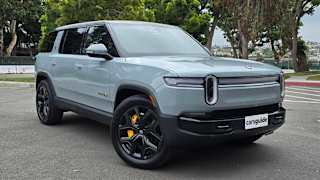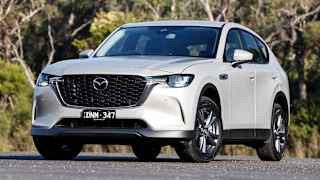The Golf has, for at least a decade or more, been at the absolute top of the small-hatchback tree when it comes to driving sophistication. And whatever else you think about the product, a lack of refinement and driver involvement has not been missing from the formula.
This time around, VW claims to have tweaked the suspension rates slightly for the Life, Style and R-Line and it’s hard to argue with the result. Just as all Golfs for the last couple of decades have, the 8.5, even in its simplest specification, rides and corners with a combination of balance and ride quality that few small cars - and pretty much no mainstream hatchback - under $50,000 can match.
It sounds like a big statement, but the first few kilometres will convince you this is how all good cars should steer and handle bumps and lumps. There’s no sense that the Golf will ever run out of suspension travel, nor any suggestion it’s anything other than an entertaining and engaging thing to drive.
The same goes for the engine. Peak power of 110kW mightn’t sound like a whole lot, but the torque is always where you need it and the zesty, zingy feel of the little engine makes you want to work it even harder; something it absolutely loves.
While the eight-speed automatic suggests a slightly lazier experience than a dual-clutch, this time around, the differences in shift speed and smoothness between the two types of trasmission are all but eliminated. Not only that, the Golf’s conventional automatic now obeys the paddle-shifter's commands with a degree of relentless faithfulness that makes you think it’s a dual-clutch after all.
Just as the more mainstream models have been class leaders dynamically, so too has the Golf GTI shown the way to the rest of the hot-hatch pack. This time around, though, there’s a sense it’s a more serious performance car than ever, and that has consequences.
While previous GTIs have felt immediately rewarding and flattering to pretty much any driver, this time, the GTI’s performance envelope has been stretched to the point where it now kind of needs to be driven faster than ever to offer those rewards.
It’s certainly not unfriendly at low speeds, nor an uncommunicative car by any means, rather the limit is now so sky-high, it seems a shame not to tap into it. Which means you need the right time and the right place to most enjoy what the car has to offer.
But let’s not ignore the fact the GTI has so much poise, grip and general ability up its sleeve that it will make any driver look like a superstar, and a good driver look like Oscar Piastri. The paddle-shifters are foolproof, the power delivery exacting and relentless and the steering and handling designed to never let you get in over your head. Which is not to say the GTI is uncrashable, but it has more ability than most drivers will have bravery.
Even the suspension, which is now firmer than ever, is far from too stiff or too harsh.
In 'Comfort', only big lateral thumps will get your attention, but even in 'Sport' mode, the shift in ride firmness is subtle enough to make either mode viable on even fairly lumpy roads.
And if that brilliant front end doesn’t make you question the need for the AWD Golf R, it should.












.png)















































.png)






















 copy.png)
















